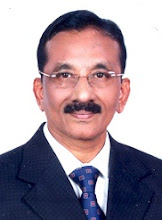
Thrissur Pooram is the annual temple festival of the town of Thrissur in Kerala, India. It is one of the most colourful temple festival of Kerala which attracts large masses of devotees and spectators from all parts of the State and even outside.
Thrissur Pooram is celebrated at the premises of the Vadakkunnathan Temple, situated on a hillock (Thekkinkadu maidan) right in the centre of the city, on the Pooram day in the month of Medom (April-May). Processions of richly caparisoned elephants accompanied by percussion ensembles from various neighbouring temples culminate at the Vadakumnathan temple. The most impressive processions are those Thriuvambadi Bhagavathy from the Thiruvambadi Sri Krishna Temple and th
Medom (April-May). Processions of richly caparisoned elephants accompanied by percussion ensembles from various neighbouring temples culminate at the Vadakumnathan temple. The most impressive processions are those Thriuvambadi Bhagavathy from the Thiruvambadi Sri Krishna Temple and th e Paramekkavu Bhagavathi from Paramekkavu temple. The celebrations which last for over 36 hours includes parasol displays and firework shows.
e Paramekkavu Bhagavathi from Paramekkavu temple. The celebrations which last for over 36 hours includes parasol displays and firework shows.
This festival was introduced by Sakthan Thampuran, the Maharaja of the erstwhile Cochin State in the late eighteenth century. Perhaps, there is no other festival in Kerala that draws such an unbelievable number of people to a single event. However Vadakkunnathan is a mere spectator at this festival, lending its premises and grounds for the great event. The pooram festival is also well known for the magnificent display of fireworks. Fire works start in the early hours and the dazzling display last three to four hours.
The Pooram Festival is celebrated by two rival groups representing the two divisions of Thrissur Paramekkavu and Thiruvambadi vying with each other in making the display of fireworks grander and more colourful. Each group is allowed to display a maximum of fifteen elephants and all efforts are made by each party to secure the best elephants in South India and the most artistic parasols, several kinds of which are raised on the elephants during the display. Commencing in t he early hours of the morning, the celebrations last till the break of dawn, the next day.
he early hours of the morning, the celebrations last till the break of dawn, the next day.
The procession but also quite enlivening. The marvellous as well as magical effect of the Panchavadyam, a combination of five percussion and wind instruments is to be felt and enjoyed. Among the varieties of festivals celebrated in Kerala, Thrissur Pooram is the most thunderous, spectacular and dazzling. There are three temples participating in the event. It is an expression of popular fascination for sound and colour, and because of the pageantry, it appeals to all people. The images of the deities from all temples of the village are taken on elephants to the main temple. The climax of the festival is the exhibition of thirty elephants and the famous fireworks at 2.30 am local time.
Thrissur Pooram is celebrated at the premises of the Vadakkunnathan Temple, situated on a hillock (Thekkinkadu maidan) right in the centre of the city, on the Pooram day in the month of
 Medom (April-May). Processions of richly caparisoned elephants accompanied by percussion ensembles from various neighbouring temples culminate at the Vadakumnathan temple. The most impressive processions are those Thriuvambadi Bhagavathy from the Thiruvambadi Sri Krishna Temple and th
Medom (April-May). Processions of richly caparisoned elephants accompanied by percussion ensembles from various neighbouring temples culminate at the Vadakumnathan temple. The most impressive processions are those Thriuvambadi Bhagavathy from the Thiruvambadi Sri Krishna Temple and th e Paramekkavu Bhagavathi from Paramekkavu temple. The celebrations which last for over 36 hours includes parasol displays and firework shows.
e Paramekkavu Bhagavathi from Paramekkavu temple. The celebrations which last for over 36 hours includes parasol displays and firework shows.This festival was introduced by Sakthan Thampuran, the Maharaja of the erstwhile Cochin State in the late eighteenth century. Perhaps, there is no other festival in Kerala that draws such an unbelievable number of people to a single event. However Vadakkunnathan is a mere spectator at this festival, lending its premises and grounds for the great event. The pooram festival is also well known for the magnificent display of fireworks. Fire works start in the early hours and the dazzling display last three to four hours.

The Pooram Festival is celebrated by two rival groups representing the two divisions of Thrissur Paramekkavu and Thiruvambadi vying with each other in making the display of fireworks grander and more colourful. Each group is allowed to display a maximum of fifteen elephants and all efforts are made by each party to secure the best elephants in South India and the most artistic parasols, several kinds of which are raised on the elephants during the display. Commencing in t
 he early hours of the morning, the celebrations last till the break of dawn, the next day.
he early hours of the morning, the celebrations last till the break of dawn, the next day.The procession but also quite enlivening. The marvellous as well as magical effect of the Panchavadyam, a combination of five percussion and wind instruments is to be felt and enjoyed. Among the varieties of festivals celebrated in Kerala, Thrissur Pooram is the most thunderous, spectacular and dazzling. There are three temples participating in the event. It is an expression of popular fascination for sound and colour, and because of the pageantry, it appeals to all people. The images of the deities from all temples of the village are taken on elephants to the main temple. The climax of the festival is the exhibition of thirty elephants and the famous fireworks at 2.30 am local time.










